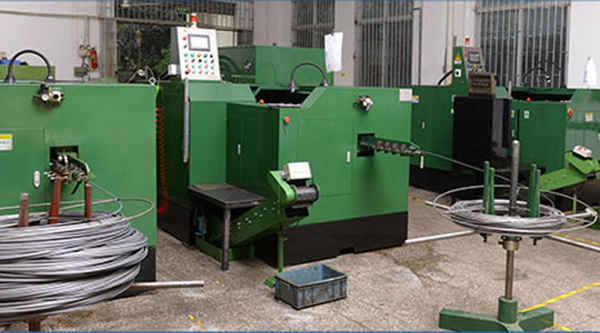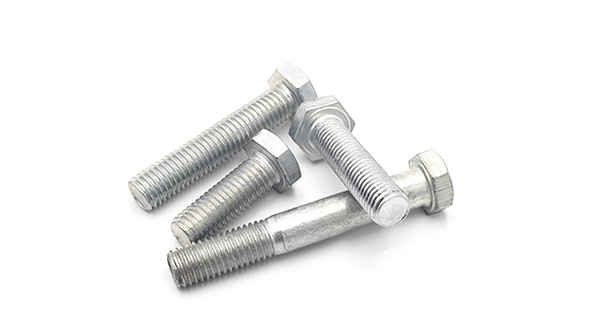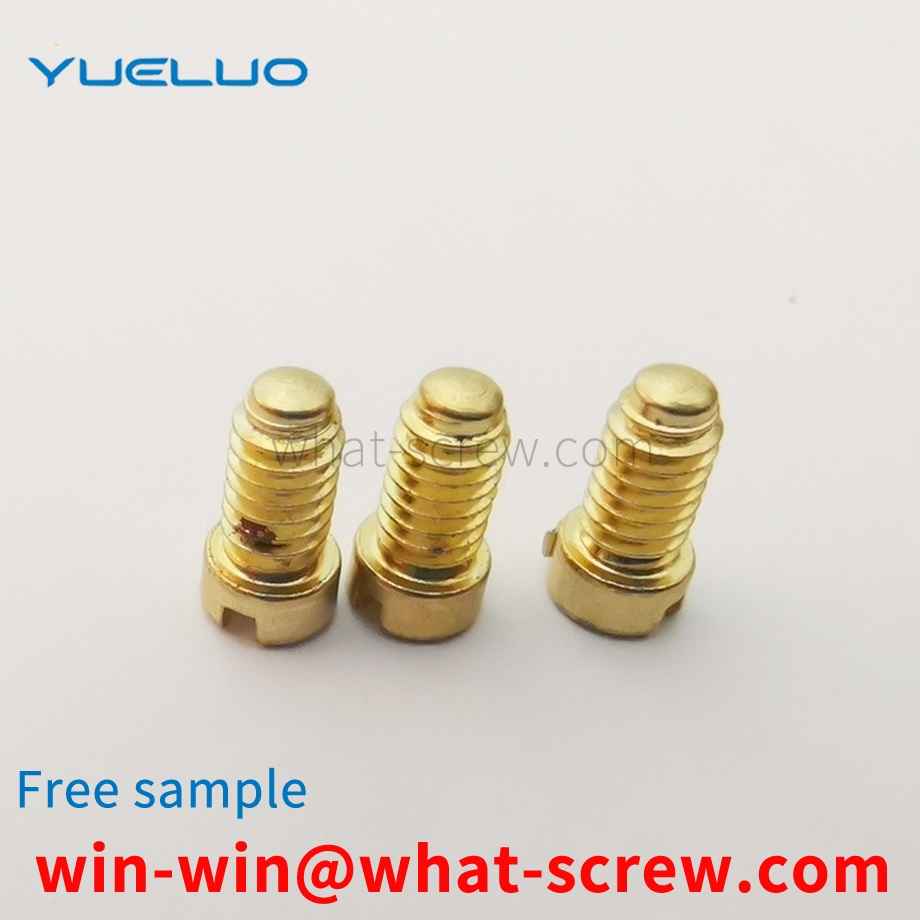What is the tolerance range of precision screws?
What is the tolerance range of precision screws?
Service Hotline
+86760-8787 8587We have more than ten years of production experience in the screw industry. The main products are: machine wire KM screws, large quantities of nuts, cross hexagon bolts, Q863 stainless steel nuts, extended super-long pull-out screws, union bolts, half-button screws, black 912 Cup head socket head cap bolt, elastic cotter pin, round machine nut, blackened GB93 gasket, GR2TA2 screw, what is the function of washer, GB812, hexagonal nylon column single head isolation column and other fasteners, due to the different materials and specifications of the products Different, the price is also different, if you need, please contact us.


The quality of electroplating is measured primarily by its corrosion resistance, followed by appearance. Corrosion resistance is to imitate the working environment of the product, set it as the test condition, and perform a corrosion test on it. The quality of electroplating products shall be controlled from the following aspects: 1. Appearance: Partial uncoated, scorched, rough, gray, peeling, crusted, and obvious stripes are not allowed on the surface of the product, and pinholes, pitting, and black plating are not allowed. Slag, loose passivation film, cracks, peeling off and serious passivation marks. 2. Coating thickness: The operating life of fasteners in corrosive atmosphere is proportional to its coating thickness. The general recommended thickness of economical electroplating coating is 0.00015in ~ 0.0005in (4 ~ 12um). Hot-dip galvanizing: the standard average thickness is 54 um (43 um for diameter ≤ 3/8), and the minimum thickness is 43 um (37 um for diameter ≤ 3/8). 3. Coating distribution: With different deposition methods, the aggregation method of the coating on the surface of the fastener is also different. During electroplating, the coating metal is not uniformly deposited on the peripheral edge, and a thicker coating is obtained at the corners. In the threaded portion of the fastener, the thickest coating is located on the thread crest, gradually thinning along the flank of the thread, and the thinnest deposit is at the bottom of the thread, while hot dip galvanizing is just the opposite, the thicker coating is deposited on the inside corners and On the bottom of the thread, mechanical plating tends to deposit the same metal as hot-dip plating, but is smoother and has a much more uniform thickness over the entire surface [3]. 4. Hydrogen embrittlement: During the processing and processing of fasteners, especially in the pickling and alkali washing before plating and the subsequent electroplating process, the surface absorbs hydrogen atoms, and the deposited metal coating then traps hydrogen. When the fastener is tightened, the hydrogen is transferred towards the most stressed parts, causing the pressure to build up beyond the strength of the base metal and producing microscopic surface cracks. Hydrogen is particularly active and quickly seeps into the newly formed fissures. This pressure-rupture-penetration cycle continues until the fastener breaks. Usually occurs within a few hours after the first stress application. To eliminate the threat of hydrogen embrittlement, fasteners are heated and baked as soon as possible after plating to allow hydrogen to seep out of the plating, typically at 375-4000F (176-190C) for 3-24 hours. Since mechanical galvanizing is non-electrolyte, this virtually eliminates the threat of hydrogen embrittlement, which exists in galvanizing using electrochemical methods. In addition, due to engineering standards, it is forbidden to hot-dip galvanize fasteners with hardness higher than HRC35 (Imperial Gr8, metric 10.9 and above). Therefore, hydrogen embrittlement rarely occurs in hot-dip plated fasteners. 5. Adhesion: Cut or pry off with a solid tip and considerable pressure. If, in front of the blade tip, the coating peels off in flakes or skins, exposing the base metal, the adhesion shall be considered insufficient.

In view of the deficiencies of the prior art, a simple structure is provided, which can ensure that the nut body and the washer are assembled together during the production of the wheel nut, and will not be separated from each other in any occasion, so as to ensure the reliability of the assembly, and the nut will no longer appear. The wheel nut assembly that needs to be reassembled after use or placement saves time and effectively improves the convenience of the wheel nut when it is used or placed


In real life, rivet nuts are used. With different specifications and different uses, many people are familiar with this tool but don't know how to use it properly. In fact, rivet nut tools have manual and transmission, and now are rarely used for manual. If you choose to use electric rivet nuts in order to improve production efficiency, which of the two is more widely used? The following describes the use of electric rivet nuts and manual nuts. How to use the manual rivet nut tool: Insert the rivet nut into the drilled installation hole with a rivet mother tool to fix the rivet nut. (1) Screw the rivet nut onto the rivet nut tool 2) Use the rivet nut tool to insert the rivet nut into the drilled mounting hole. (3) Tighten the nut, and press the handles on both sides of the rivet nut tool to the direction of the middle round rod. You can only press it hard. Therefore, this pressure must be in place. It is forbidden to repeatedly squeeze the handles on both sides to damage the nut. Fastening thread in the form of inside. (4) The rivet nut tool is separated from the rivet nut: just loosen the ball head in the picture, and the tool will be separated from the nut after completely loosening.

screw with a gasket aims to provide a screw with a gasket that improves installation efficiency. The technical solution of the screw is that after the screw cap, the connecting rod and the screw rod are processed, the gasket with the installation through hole is processed. The installation through hole is drilled through the connecting rod, and then the end of the screw rod opposite to the connecting rod is processed to form a convex tooth structure by extrusion. At the same time, the outer diameter of the tooth peak of the convex tooth is larger than the inner diameter of the installation through hole, so that the gasket is not easy to be installed. Falling off, the step of manually wearing the gasket is reduced, that is, the workload of the staff is reduced, and the installation efficiency is relatively high. The flange increases the contact area between the screw cap and the gasket, and enhances the friction between the screw cap and the gasket, which can prevent the screw from loosening easily after being fastened and installed, thereby improving the connection stability of the screw. When installing the screw, the fixing part can be snapped into the fixing groove on the installation plane, so as to avoid the washer from rotating with the rotation of the screw when the screw is tightened, which is convenient for the tightening and installation of the screw.

The above content is uploaded by Yueluo or the Internet. If there is any copyright issue, please contact [email protected].

What is the tolerance range of precision screws?

How to choose the right stainless steel screw manufacturer?

Why is there an R angle under the head of the hexagon head s...

We have more than ten years of production experience in the ...

We have more than ten years of experience in the production ...

We have more than ten years of experience in the production ...

We have more than ten years of experience in screw industry ...